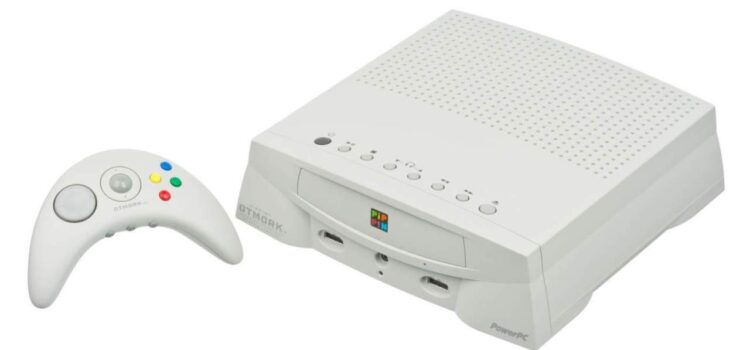
Apple isn’t a name you normally partner with the notorious control center conflicts of the mid 90s. Yet, way before the period of the iPods and the iPhones, in the age of the PlayStation 1, the Nintendo 64, and the Sega Saturn, Apple took a shot at fostering its own gaming console. The outcome was the Apple Pippin, an item that would ultimately stand out forever as one of the most horrendously terrible Apple items made, potentially in any event, overriding any semblance of the notorious Hockey Puck mouse and the Newton tablet.
Today, despite the fact that it is generally known among PC and gaming geeks for being an awful gaming console (by means of Museum of Failure), Apple’s unique vision for the Pippin was a lot greater. The organization imagined the item as a flexible mixed media gadget that was an undeniably more skilled, all-round gadget contrasted with the independent control center of the time. Looking back, this choice wound up making a “neither here, nor there” item that attempted to do everything except wound up making an inferior showing with each and every one of them.
Why did Apple develop the Pippin?
The mid-90s was an event time for both the gaming and processing space. The home PC and the gaming console industry were both in their initial days. Gaming control center of the time were generally reasonable gadgets that opened easily under the $300 mark. Then again, PCs were significantly more costly, and the significant expense kept individuals from embracing them as once huge mob.
Apple, which had been working with Japanese toymaker and afterward gaming console organization Bandai, worked out plans for a gaming console (through AppleScoop) that would basically be a downsized form of the Apple Macintosh of the time. The thought was to make an item that couldn’t mess around yet would draw in a bigger crowd that yearned for a PC-like gadget. Moreover, this gadget could likewise go about as an interchanges stage, handle intuitive music, and even wear the cap of an instructive apparatus, all while additionally holding the capacity to mess around.
This constantly implied Apple could request a more exorbitant cost tag for it contrasted with ‘simple’ gaming consoles and furthermore position it as a reasonable PC substitution that didn’t cost a lot. While the thought sounded incredible on paper, the execution was not exactly dynamite. Not long after its presentation in 1996, terrible audits and helpless gathering implied Apple pulled it off the market scarcely a year after it was presented. The Pippin resided longer in the Japanese market, where Bandai kept supporting it until 2002.
What made the Pippin special?
The Pippin was an interesting item in any way shape or form. It was basically a downsized adaptation of an Apple Mac result of the time – Apple Performa 5200. Those mindful of Apple history should realize that the Performa 5200 – looking back – was generally considered among the most terrible Apple PCs ever – chiefly on the grounds that it performed inadequately contrasted with its also valued rivalry.
Considering that Performa 5200 was at that point notorious for its terrible showing, it was nothing unexpected that the Apple Pippin was no lively entertainer. The Pippin ran a changed variant of Mac OS 7 (additionally called System 7), and this loaned it a few extraordinary abilities – incredible on gaming consoles at that point.
It offered help for modem network and could interface peripherals like consoles and mice. It was likewise the main gaming console at an opportunity to offer spaces for adding extra DRAM modules. The Pippin even accompanied PCI-like extension spaces that could be utilized for adding outer peripherals. Clients could just interface the Pippin to their current TVs to begin utilizing the gadget.
Why did it fail?
Despite the fact that Apple was engaged with the advancement of the Pippin, it was not completely dedicated to the venture and basically imagined it as an open stage for which others could foster modified items. Japanese toymaker Bandai showed strong fascination with the task and was liable for making the equipment in its nation of origin, where it came in white tone and was sold under the Atmark marking.
The vital justification behind the Pippin not taking off, notwithstanding, was its restrictive sticker price of $650 in Japan. At the point when the item ultimately came to the U.S., where it was known as the Bandai Pippin @ World (through BonAirInsider Archive), Apple needed clients to pay $600 for the item. This made it multiple occasions as costly as well known gaming control center of the time – including the $299 PlayStation and the Nintendo 64.
Apple’s advertising groups couldn’t persuade anybody about Pippin’s probably unrivaled abilities that went past the domains of gaming. What’s more it didn’t assist Pippin’s with causing when the item was promoted as a gaming console. Despite the fact that Apple relied upon the more extensive accessibility of CD-ROM titles for the Pippin, there was a lack of value games for the Pippin, further heading out likely gamers. This multitude of elements ultimately implied that Apple and Bandai together simply figured out how to sell around 42,000 units of the Pippin around the world (by means of TechRadar). Apple as an organization was likewise under a ton of disturbance at that point, and was even nearly insolvency at a certain point.
What sped up the downfall of Pippin, in any case, was the arrival of Steve Jobs to Apple in 1997. Steve, who was casually sacked from Apple in 1985, returned to the organization that year and would proceed to settle on a few clearing choices, one of which incorporated the rejecting of the Pippin. Looking back, Steve’s rebound was essential for Apple and he would continue to establish the framework of the cutting edge Apple Inc. we know today.











